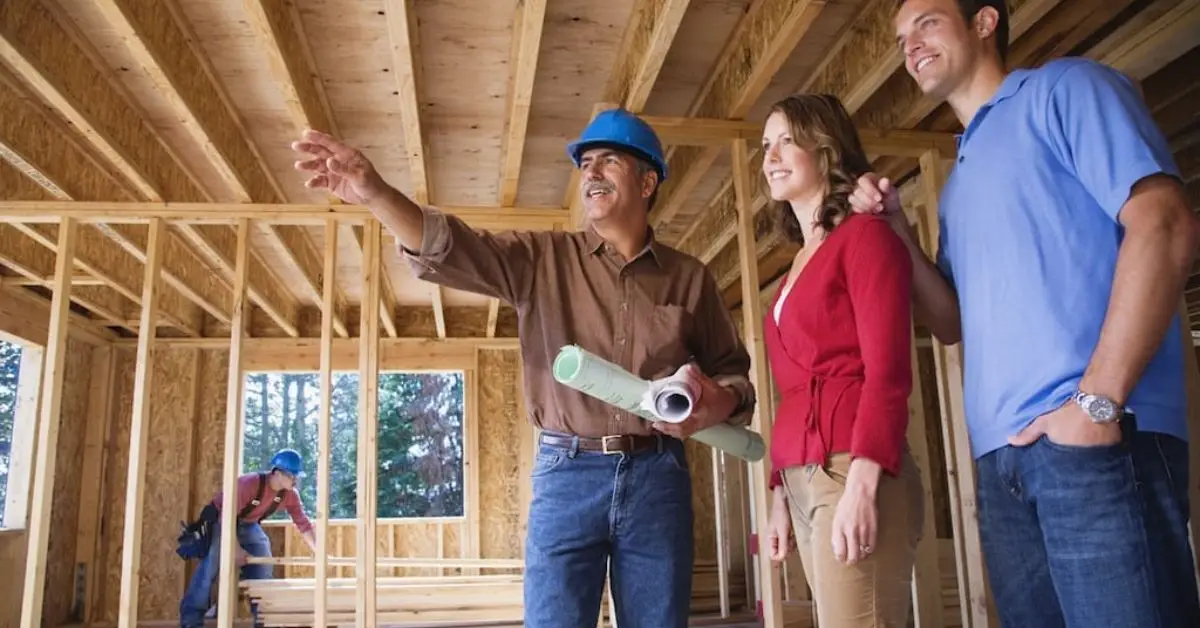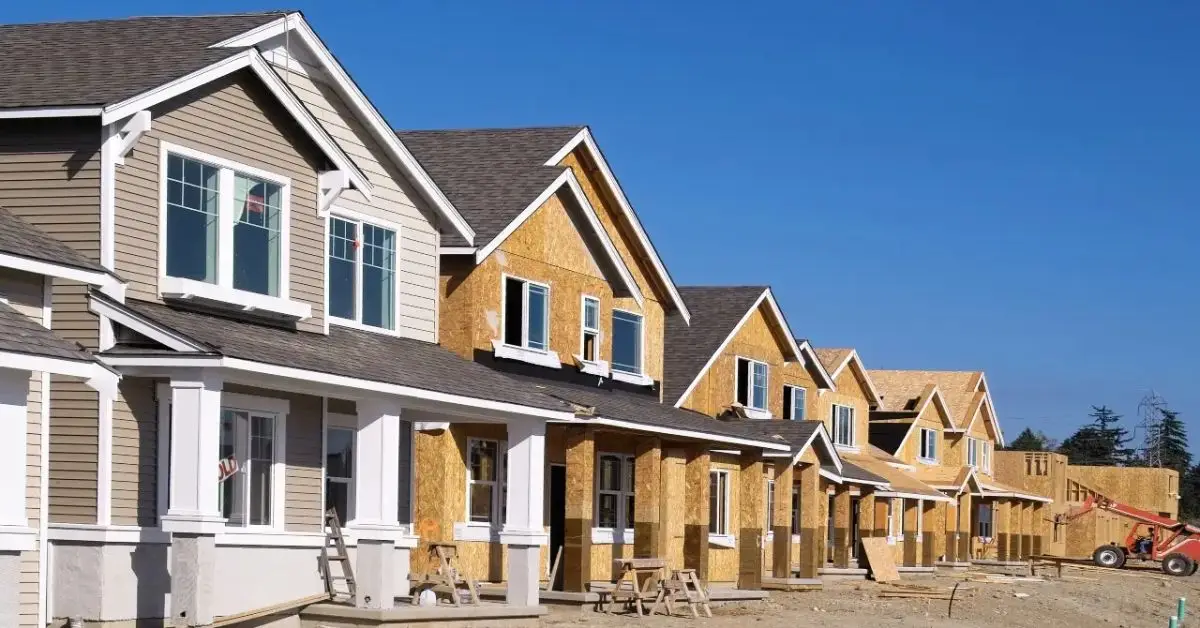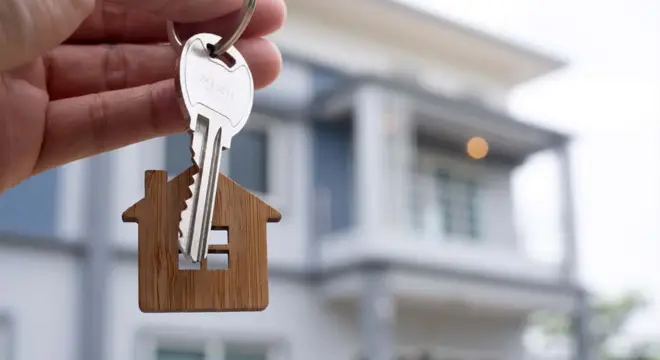10 Things No One Tells You About Buying a New Construction Home
Buying a new construction home sounds like the dream, right? Everything’s clean, untouched, and built just for you. No peeling paint, no strange smells, no twenty-year-old plumbing. But here’s the truth most people don’t tell you: buying a new build comes with its own risks — many of which you won’t see until it’s too late.
Builders know how to market the “perfect lifestyle.” Sales reps are trained to make everything seem easy, fast, and safe. But behind the granite countertops and “limited-time incentives,” there are contract traps, hidden costs, and quality shortcuts that could cost you thousands if you’re not prepared.
I’ve seen smart people walk into builder offices unrepresented and walk out with overpriced upgrades, vague promises, and regret. So this guide isn’t just about tips — it’s about how to protect yourself from the inside out. Whether you’re buying a spec home that’s nearly done or building from dirt, these ten strategies will help you ask better questions, avoid rookie mistakes, and buy with eyes wide open.
Let’s start where most people don’t: the market itself. Because if you don’t understand the builder’s reality, you can’t negotiate yours.
1. Pick Your Path — Spec, Semi-Custom, or Custom?
One of the first decisions you’ll face is what type of new home to buy. Not all “new construction” homes are the same, and each path comes with its own trade-offs in control, cost, and time.
Let’s break it down:
Spec Homes: For Speed and Simplicity
A spec home (short for “speculative”) is already built or nearly finished when you buy it. The builder picked the floor plan, finishes, and lot — now they just want it sold.
If you’re looking to move in fast and avoid decision fatigue, this can be a great option. You might even get a price break if the home has been sitting for a while. But keep in mind: what you see is what you get. No changing countertops or moving walls.
Best for: Tight timelines, lower risk, less stress
Watch out for: Overpriced “upgrades” and limited inspection windows
Semi-Custom: A Balance of Control and Efficiency
With semi-custom homes, the builder has a set of approved floor plans and you get to make selections — layout tweaks, flooring, cabinets, lighting, maybe a few structural changes depending on the builder.
You’ll have more say in the look and feel of the home, but there’s still a predefined framework. These are usually part of large developments with HOA rules and similar elevations.
Best for: Buyers who want personality without the pain of full design
Watch out for: Change order fees, limited customization windows
Full Custom: Total Control, Total Responsibility
If you want to build on your own land or have full creative control, then a custom home is the way to go. You’ll hire your own architect, designer, general contractor — or a custom builder who handles it all.
You choose everything: structure, systems, finishes, landscaping. But the freedom comes at a cost: longer timelines, more risk, more decisions, and usually higher price tags.
Best for: Experienced buyers who know exactly what they want
Watch out for: Budget creep, permitting delays, and decision fatigue
Too many people walk into a builder’s office not knowing they have options — or what those options really mean. Builders will push what’s easiest for them to sell, not what’s best for your life stage, personality, or budget.
Understanding the difference between spec, semi-custom, and custom helps you align your expectations early. It also helps you plan financing, inspections, and timelines realistically — no last-minute surprises.
Quick question: If you had to move in within 60 days, which path would you pick — speed or flexibility? Let me know how you’re thinking about it.
2. Bring Your Own Team — Not Just the Builder’s
Here’s something most first-time new-construction buyers don’t realize: that smiling sales rep at the model home? They don’t work for you. Their paycheck comes from the builder. Their job is to get the deal signed — on the builder’s terms.

If you want someone in your corner, you need to bring your own team early. And I mean early — before you even fill out a “guest card” at the sales center.
Step 1: Your Own Real Estate Agent (Yes, Even for New Homes)
A lot of buyers assume they don’t need an agent when buying new construction. Huge mistake. Builders expect you to have one — and in most cases, they’ve already built the agent’s commission into the price.
If you register without one, you often lose the right to bring one in later. That means you go through the entire process — contracts, upgrades, walkthroughs — alone. No one double-checking the paperwork. No one catching vague language. No one pushing back when timelines slip.
The best agents understand builder contracts, warranty language, and construction red flags. They can help you negotiate better upgrades, and more importantly, protect you from bad deals.
Step 2: Shop for Your Own Lender — Don’t Default to The Builder’s
Builder reps love to say you’ll get “incentives” if you use their in-house lender. And sometimes you do — but only on the surface. The interest rate might be padded, the fees buried, and the lock-in terms unclear.
What you want to do is get quotes from at least 2–3 outside lenders before even talking to the builder’s loan officer. This gives you leverage. You can still take the incentive if it’s worth it, but you’ll know if you’re actually saving money — or just being sold a shiny number that hides the real cost.
Also important: some builder lenders don’t offer extended rate locks or float-down options. If you’re building from scratch, this could make or break your affordability if rates change mid-construction.
Step 3: Consider a Real Estate Attorney for Contract Review
Builder contracts aren’t standard realtor forms. They’re long, legal, and often tilted in the builder’s favor. A real estate attorney — even if it’s just a one-time consult — can catch things like:
- One-sided cancellation clauses
- Hidden escalation riders
- Warranty loopholes
- Construction delay fine print
This isn’t about being confrontational. It’s about making sure you fully understand what you’re signing. Builders expect serious buyers to ask hard questions.
New construction feels organized and safe — so people assume they don’t need backup. But that’s exactly where mistakes happen. You’re entering a high-stakes, multi-month process where the other side controls the product, paperwork, and timeline.
Bringing your own agent, lender, and legal support isn’t overkill — it’s smart strategy. And it could save you thousands, plus months of frustration. If you’re serious about protecting your investment from the start, avoid these 8 common home buying and selling mistakes — even experienced buyers make them.
If you’ve already talked to a builder — did they pressure you to use their lender or sign quickly? Drop a comment and share your experience — this is where real buyer stories help others the most.
3. Vet the Builder Like an Investor — Not Just a Buyer
Most buyers spend more time researching a $50 toaster than they do a $500,000 builder. Don’t be one of them.
A builder’s website and model home will always look polished — that’s their job. But glossy brochures won’t tell you how they handle warranty claims, whether they cut corners on framing, or if they’ve been sued for construction defects last year.

If you’re going to trust someone to build your home from the ground up, do what any smart investor would do: run background checks, ask hard questions, and talk to past customers.
What You Should Look Into
1. Search for complaints, lawsuits, and online reviews
Google the builder’s name + “complaint” or “lawsuit.” Check the Better Business Bureau (BBB) and state licensing boards. Look for patterns — not just one angry person, but repeated themes. Example: Better Business Bureau – Home Builders Category (Not all builders are listed, but it’s a good place to start.)
2. Ask about warranty response times
A lot of problems in new homes don’t show up until the first rain, or the first freeze. What happens then?
- Do they respond within days or weeks?
- Are repairs done right the first time? Ask homeowners in a completed community. Knock on a door. People will tell you — especially if they’re frustrated.
3. Visit older communities they built
Look at homes 4–7 years old. How’s the siding holding up? The landscaping? Ask if they’d build with the same company again. That one question reveals a lot.
4. Ask the builder for their subcontractor list
Reputable builders work with solid trades — framers, electricians, plumbers — and aren’t afraid to share who they use. If they dodge or say it changes too often, that’s a red flag.
Buying a new home isn’t just about pretty finishes. It’s about the bones behind the walls — and the people who built them. A builder with weak systems or bad warranty follow-up can turn your dream home into a money pit, fast.
Due diligence now is worth way more than fixing mistakes later. You’re not just buying a house — you’re investing in someone’s track record. Make sure it’s one you can trust.
What would you ask a homeowner who already lives in a home by your builder? Drop your questions below — or better yet, share what you’ve heard from others. Your intel might help the next buyer avoid a big mistake.
4. Contract Traps to Fix Before You Sign
Here’s the truth no one tells you: most of the real damage in a new construction deal happens on paper — before a single brick is laid.
Builder contracts aren’t like the standard purchase agreements used in resale homes. These are long, builder-written documents full of legal gray zones, hidden clauses, and “buyer agrees to…” language that works against you if you don’t catch it.
If you sign that stack of papers too quickly, you could be locked into a home that costs more than expected, finishes different from what you saw, and zero penalties if the builder delivers six months late.
The Fine Print That Can Burn You
1. Escalation Clauses
Some builders insert language that lets them raise the home price mid-build due to “market conditions” or rising material costs. This might sound reasonable — until you’re handed a $25,000 price hike two months in.
You need to ask:
- Is there a cap?
- Can I walk away if it exceeds a certain percentage?
- Is it tied to actual material cost receipts?
2. Inclusions and Finish-Level Vagueness
What you see in the model home is almost never what you get — unless it’s in writing. Many buyers assume they’ll get the same finishes, tile patterns, cabinet height, or lighting plan, only to be told later: “That was an upgrade.”
Ask for a full inclusions list with SKUs, brand names, and finish levels.
3. Completion Timelines — and What Happens If They Miss
Most builder contracts give you no recourse if the home is delayed — but they give themselves wiggle room for anything from weather to “labor conditions.” Look for:
- Fixed delivery windows (e.g., 120–180 days from permit)
- Penalty clauses if delays exceed agreed timeframe
- Buyer rights to cancel if timelines extend too far
4. Waiving Warranties or Legal Protections
Some builders will ask you to waive implied warranties (like the warranty of habitability) or limit how long you can report defects. Don’t assume “warranty included” means full coverage.
Make sure you understand:
- Length and coverage of structural vs cosmetic warranties
- Who performs the work (in-house or outsourced?)
- What happens after closing if something fails?
Once you sign that contract, your leverage drops — fast. You’re locked in. So this is your one shot to ask questions, demand clarity, and push back on terms that don’t protect you.
It’s not about being difficult. It’s about being smart. Builders are businesses — their contracts are written to protect them. You need someone in your corner who knows what to flag.
Even if it costs you a few hundred dollars, have a real estate attorney review your contract. That one move could save you from thousands in future stress.
Have you ever caught a sketchy clause in a builder contract — or wish you had? Share your story. It might help someone avoid the same mistake.
5. Budget Beyond the Base Price — The Costs Nobody Warns You About
You walk into a model home, fall in love, and the sales rep says the base price is “starting at $420,000.” Sounds manageable, right?

But here’s what they don’t tell you until later: that price usually doesn’t include landscaping, window treatments, lighting, appliances, or even towel bars. Your “brand-new dream home” often comes as a bare box, and finishing it can easily run you $20,000 to $50,000 more — after closing.
If you don’t budget for that up front, you’re setting yourself up for surprises.
What You Might Still Need to Pay For
Here’s a breakdown of common “post-close” costs buyers face — most of which aren’t included in the builder’s price:
- Landscaping, sod, irrigation
- Window blinds, curtain rods
- Light fixtures and ceiling fans
- Garage door openers
- Appliances (fridge, washer, dryer)
- Fencing, mailbox, gutters
- Screen doors, backyard patios
- Closet systems, towel bars, mirrors
Some builders offer packages, but most let you handle these yourself after closing — and that means out-of-pocket costs, usually at retail prices.
HOA Fees, Assessments, and “Extras” in the Community
Also ask:
- Is there a monthly or quarterly HOA fee?
- Are there future assessments planned for amenities or infrastructure?
- Do you have to pay for your own mailbox installation or trash bins?
These fees aren’t always disclosed clearly at first — especially if the community is still under construction.
You’re not alone in being blindsided.
Builders know buyers focus on price. So they advertise the base cost and let the rest pile up silently. That’s why so many people feel financially stretched even after “locking in a great deal.”
If you know these costs are coming, you can budget smarter, negotiate more strategically, and walk into your new home without a growing list of unfinished details.
What’s one “surprise expense” you didn’t expect in your last home? Whether it was blinds or backyard grading, share it — someone else needs to hear it.
6. Insist on Phased Inspections — Don’t Skip Them Even for a Brand-New Home
You might think a brand-new home is flawless—but city inspectors only verify code compliance. They don’t guarantee quality, and mistakes like improper wiring, poor insulation, or framing errors can slip through unnoticed. Once drywall is in, it’s too late to fix these hidden issues cheaply.
To really safeguard your investment, insist on phased, independent inspections at critical stages of construction.
The Four Must-Have Inspection Phases
- Pre‑Slab/Foundation Stage: Check rebar placement, vapor barrier, plumbing stub-outs, grading—once concrete is poured, there’s no going back.
- Pre‑Drywall (Framing + Rough‑Ins): This is your most crucial checkpoint. Inspect framing, wiring, plumbing, ductwork, insulation, and air barriers—all before walls are sealed.
- Final Walkthrough (Pre‑Closing): Beyond cosmetic details, check appliance hookups, outlet operation, and door alignment. This is your final chance to catch issues before move-in.
- 11‑Month Warranty Inspection: Builder warranties usually expire at 12 months. This inspection catches settling cracks, drainage problems, or HVAC quirks that appear after living in the home.
Professional Insight on Pre‑Drywall Inspections
According to InterNACHI®, the international association of certified home inspectors:
“A pre‑drywall inspection provides the last opportunity to ensure the structural framing, electrical, plumbing and HVAC components are correctly installed before drywall conceals any issues… identifying or fixing potential problems early in construction is significantly less costly.”
A finished home looks perfect—but beneath the surface, problems may hide. Without phased inspections, you’re trusting that every subcontractor did their job right. That’s gambling. These inspections give you a clear record and opportunity to fix issues early, save money, and avoid stress later.
Have you had—or skipped—a pre‑drywall inspection? What issues did the inspector find (or what did you regret overlooking)? Share your experience below—it could help someone else avoid a big mistake.
7. Healthy & Efficient from Day One — Don’t Pay More Later
Most buyers focus on cabinets, tiles, and flooring — the visible stuff. But what about air quality, ventilation, and long-term energy use? These are the things that quietly affect your health and monthly bills every single day.
The best time to build an efficient, healthy home is now — before the drywall goes up. Because once you’re moved in, upgrades become expensive, disruptive, and often just won’t happen.
What to Ask Your Builder (Now, Not Later)
1. Can I upgrade the HVAC system or filtration?
Most builders include a basic 13-SEER unit with standard MERV-6 filters — which barely trap allergens or pollutants.
Ask for a higher-SEER HVAC (16 or above) and MERV-13 filters or a whole-house air purifier.
2. Is the home tested for air leakage (blower door test)?
- A tight envelope = lower bills. But some builders skip testing unless you request it.
- Ask for third-party testing — especially if your local code doesn’t require it.
3. Are low-VOC paints, glues, and materials being used?
Indoor air is often 2–5x more polluted than outdoor air. VOCs are a hidden cause of respiratory issues in new homes.
4. Can I get ENERGY STAR or LEED certification options?
Even if you don’t need the label, builders offering this usually build to a higher standard.
According to Harvard’s Healthy Buildings program, homes with proper ventilation and cleaner materials reduce asthma, fatigue, and even cognitive decline — all tied to indoor air quality.
By the time you realize your builder used cheap insulation, a weak HVAC unit, or toxic materials, you’re already living with the consequences. These decisions affect how your home feels, smells, and functions — and the earlier you address them, the cheaper and easier it is.
What upgrade are you glad you asked for — or wish you had? Share below, especially if it helped with energy savings or your family’s health.
8. Understand Builder Warranties — and What They Don’t Cover
Most buyers hear “one-year warranty” and assume they’re covered for anything that might go wrong. But builder warranties are limited, conditional, and full of gray areas—and if you don’t read the fine print, you might end up paying for repairs you thought were included.

This isn’t about being paranoid—it’s about being informed before problems start.
What Builder Warranties Typically Cover
- 1-Year Workmanship Warranty: Covers cosmetic and functional defects like drywall cracks, flooring issues, paint flaws, and minor trim problems.
- 2-Year Systems Warranty: May include coverage for electrical, plumbing, and HVAC systems—but not always labor or diagnostic costs.
- 10-Year Structural Warranty: Sounds great, but usually limited to “major load-bearing components.” Anything cosmetic—or caused by soil movement or poor drainage—may be excluded.
What’s Not Covered (That Most Buyers Don’t Realize)
- Poor grading or yard drainage
- Concrete cracks in driveway or patios
- Shrinkage cracks in drywall or paint
- Appliance malfunctions (those follow the manufacturer’s warranty)
- Damage caused by lack of maintenance (even if builder error contributed)
And if you miss the official one-year walkthrough deadline, even valid claims may be denied.
What You Should Do Now
- Request the full warranty before you sign the builder contract.
- Clarify what counts as “defect” vs. normal wear/settlement.
- Schedule a 10- to 11-month inspection before warranty expiration.
- Keep photos, logs, and communication records for every concern—yes, even paint bubbling.
Many homeowners only discover their warranty limits after a denial email. By then, repair costs are on you. Understanding what’s really covered protects you from surprise expenses and helps you hold the builder accountable—on time.
Have you filed a builder warranty claim? What worked—or didn’t? Share your experience and help others protect their investment.
Here’s Section 10: Don’t Skip Negotiations — Builders Aren’t as Firm as They Seem, written in a practical, no-nonsense tone and backed by a credible external link for authority.
9. Don’t Skip Negotiations — Builders Aren’t as Firm as They Seem
If you think pricing in new construction is non-negotiable, that’s exactly what the builder wants you to believe. But the truth is, builders have more wiggle room than they let on—you just have to know where and how to push.
Most buyers accept the sticker price and assume upgrades or closing costs are fixed. But especially in slower markets or toward the end of a fiscal quarter, builders are under pressure to close deals, and that’s where you gain leverage.
What You Can Negotiate — Even If They Say You Can’t
- Closing Costs: Builders often have margins to cover your title, escrow, or loan-related fees—especially if you use their preferred lender.
- Lot Premiums: Some buyers have negotiated these down or had them waived entirely.
- Upgrades and Finishes: Cabinets, flooring, countertops—these can be thrown in or discounted if you ask before contract signing.
- Appliances & Landscaping: Builders will sometimes toss in “extras” that cost them less than it costs you later.
- Timeline and Penalty Clauses: Protect yourself from construction delays by adding or amending delivery clauses.
When You Have the Most Leverage
- End of the month/quarter/year (sales reps have quotas)
- Slow sales season (fall and winter, typically)
- Homes already under construction (spec homes) that haven’t sold
- When upgrades are paid by the builder’s supplier, not out-of-pocket
Quick Tips That Work
- Bring your own agent (don’t use the builder rep alone)
- Don’t gush during your model home tour
- Ask about expired contracts or returned homes—they often carry built-in incentives
- Ask for incentives last, after price and features are set—so they’re truly “extras,” not bait
Builders want control over the sales narrative—and most buyers don’t realize they can negotiate until it’s too late. If you don’t ask, you’ll leave thousands on the table. Smart negotiation is about knowing where the builder has room—and using timing to your advantage.
Have you ever negotiated with a builder—or regretted not doing it? Share your wins (or missed chances) so others can learn what really works.
10. Smart Closing — Walkthroughs, Punch Lists & Final Protection Steps
You’ve chosen the floorplan, survived delays, and signed a mountain of paperwork. But before you get too excited about move-in day, here’s the truth: closing is your last chance to hold the builder accountable.
Many buyers let their guard down at the end. They rush through the final walkthrough, accept verbal promises, or assume small fixes will get handled “after closing.” That’s how real issues get buried—and never resolved.
What to Do During Your Final Walkthrough
- Bring a Checklist: Use a detailed punch list (or professional inspector) to catch cosmetic flaws, damaged materials, and incomplete work. Look beyond what’s obvious—check outlets, water pressure, window seals, cabinet alignment, and all lights.
- Take Photos and Video: Visual evidence matters if there’s a dispute later. Document anything the builder agrees to fix.
- Don’t Sign Until It’s in Writing: “We’ll take care of that after closing” means nothing unless it’s on your final walkthrough form or builder punch list.
- Do a Final Re-Walk Before Signing: Ask to revisit the home after the punch-list items are fixed. Some builders will rush to close and skip this.
- Hold Back Funds if Allowed: In some states, you can place funds in escrow to ensure final work is completed. Ask your closing attorney or agent if this is possible.
After months of construction stress, most buyers just want to move in. But your builder is under pressure to close—and they’re counting on you to let small details slide. This is your only leverage left. Once the deal closes, your power disappears. And once you’ve closed, make sure you don’t miss any critical follow-ups by reading 10 things to do immediately after buying your home — it’s the ultimate checklist for your first days in your new place.
Have you caught something last-minute that saved you a headache—or missed something you regret? Drop it in the comments. Your story could save someone thousands.
Final Thoughts: Buy Smart, Not Just New
Buying a new construction home can be one of the most exciting decisions of your life — but only if you go in with the right mindset, questions, and protections. Builders want you to focus on finishes and upgrades, but smart buyers look deeper: at contracts, timelines, inspections, warranties, and long-term livability. Not sure if new construction is right for you? Then you’ll want to check out these 10 must-know tips before buying an older home — because buying new isn’t the only smart path.
You don’t need to be paranoid. You just need to be informed, prepared, and unafraid to push back when something doesn’t feel right.
The tips in this guide come from real buyer experiences, industry pros, and lessons people often learn too late. If this helped you feel more confident about your next step, share it with someone else who’s building soon — or better yet, drop your own tip in the comments below. Your advice might be the thing that saves someone a huge regret later.
What’s the one thing you wish you knew before buying your new build? Let’s talk.
For more practical tips and expert guidance on new construction homes, visit Build Like New.
Disclaimer: This article is for informational purposes only and does not constitute legal, financial, or real estate advice. Always consult a licensed professional before making any property decisions.


